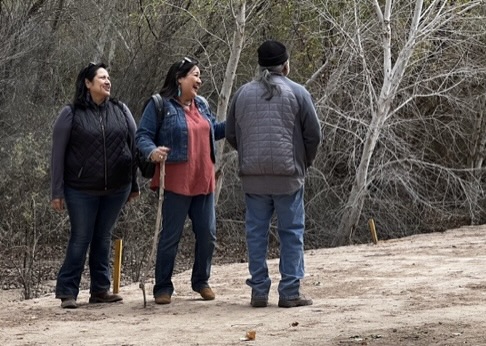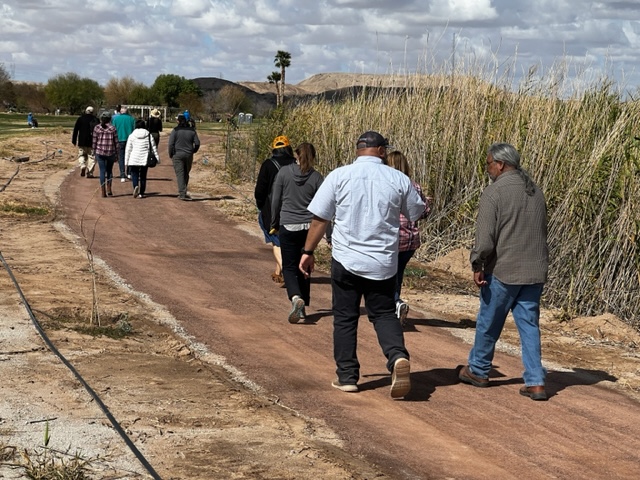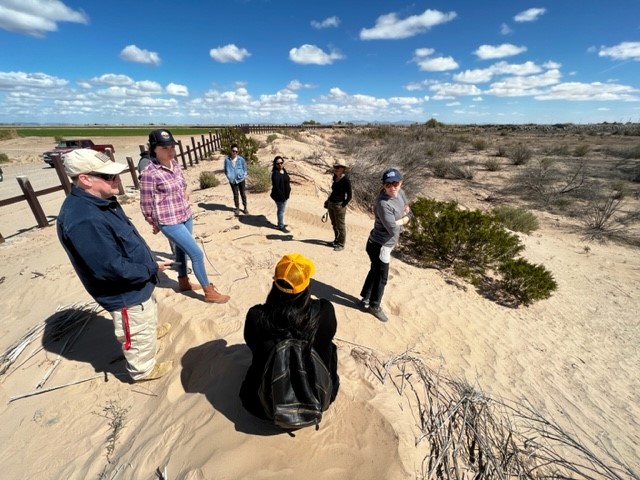The Cocopah Colorado River Limitrophe Restoration Project is led by the Cocopah Indian Tribe. It is funded through several federal sources, including the National Fish and Wildlife Foundation’s America’s Ecosystem Restoration Program, U.S. Fish and Wildlife Service’s Tribal Wildlife Grant, and the Bureau of Indian Affairs’ Tribal Climate Resilience Program. It has also received funding from Google, Meta, Microsoft, Procter & Gamble, and Bonneville Environmental Foundation.
The Cocopah are known as ‘people of the river,’ yet, for decades, the Colorado River in this area has been disconnected from its floodplain. At the southern end of the reservation, it has ceased flowing entirely near the border with Mexico, degrading this once lush landscape relied upon by the Tribe for food, clean water, spiritual well-being, and cultural traditions. These challenges have been exacerbated by hotter temperatures and multi-decade drought in the lower Colorado River and Delta, making restoration of this area even more important for the Tribe.


This multi-phase project will transform 430 acres of degraded floodplain on the Tribe’s lands, creating an oasis for Tribal members and visitors alike. The project will take place at two restoration sites across the Tribe’s three discontiguous reservations.
At the upstream site, which is above the Morelos Dam and spans 40 acres, the Tribe will restore degraded habitat and install recreational features to transform this area into a community amenity that provides broad public benefits. The Tribe will route an existing treated wastewater stream through the site and install water retention features to allow the water spread over the landscape, supporting the mosaic of revegetation with native species. They will also construct a new riverside park with a walking path, beach access to the River, overlooks, and a medicinal garden. This will offer Tribal members and visitors a chance to relax, recreate, and connect with the River while supporting Tribal members’ mental, physical, and spiritual well-being. These new amenities will also encourage local tourism and boost the Tribe’s economy by making this area of the reservation, which already has an RV park and entertainment enterprises, more attractive to visitors.
At the downstream site, which is located below the Morelos Dam and along the border between the U.S. and Mexico, the Colorado River has not flowed for decades. As such, this once lush floodplain that was vital to the Tribe’s cultural and spiritual traditions has become a parched desert overtaken by invasive species. To restore this 390-acre project area, the Tribe will install infrastructure to bring some of their unused Colorado River water allocation directly to the site to support the wetland, cottonwood-willing, and mesquite upland species that will be revegetated.
The restoration of both sites will allow the Tribe to source materials for their cultural rituals and traditions, such as burial ceremonies, from their own lands rather than traveling off-reservation and create hundreds of acres of accessible green space for Tribal members to enjoy. In conjunction with this project, the Tribe created a new Tribal Youth Corps that will participate in the restoration of both sites. In addition to furthering younger Tribal members’ connection to the land, the Tribal Youth Corps will also provide Corps members with tangible skills in landscape restoration should they choose to pursue a further career in that field.
Construction of phase one will begin in October 2025, with revegetation completed in spring 2026. Phase two construction and revegetation will be completed by spring 2027.

